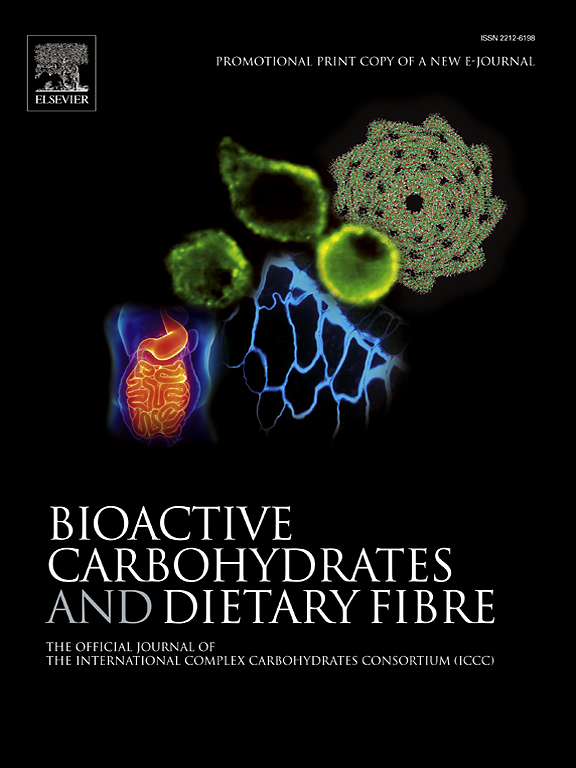For cereal bran, rating of antioxidant capacity and screening of xanthine oxidase inhibitor
IF 3.6
引用次数: 0
Abstract
Based on the free radical scavenging rate and xanthine oxidase (XOD) inhibition rate, the basic properties of different cereal bran were analyzed, and the key XOD inhibitor in bran extract was screened by ultrafiltration centrifugation combined with liquid chromatography. The effectiveness of ferulic acid (FA) in the regulation of hyperuricemia was evaluated by basic physiological indexes, expression of inflammatory factors and expression of urate transporter. The analysis of the basic properties of maize bran showed that the free phenol content of maize bran is 221.17 ± 8.03 mg GAE/100 g DW, and the bound phenol content is 245.88 ± 5.31 mg GAE/100 g DW, which is the highest among five kinds of cereal bran. The antioxidant capacity of bran was evaluated according to ABTS free radical scavenging rate and DPPH free radical scavenging rate. The IC50 value of maize bran bound phenol was 0.23 μg/mL for ABTS and 2.76 μg/mL for DPPH. Eight potential XOD inhibitors were detected in maize bran bound phenol and among which FA had the highest XOD inhibition rate. Animal experiments demonstrated that FA could effectively alleviate slow weight gain, suppress the increased expression of inflammatory factors, and correct the abnormal expression of urate transporters in hyperuricemia-induced mice. The results can provide a basis that cereal bran as a dietary supplement and functional food take hyperuricemia regulation effect in the future.
谷物麸皮抗氧化能力评定及黄嘌呤氧化酶抑制剂的筛选
基于自由基清除率和黄嘌呤氧化酶(xanthine oxidase, XOD)抑制率,分析了不同谷物麸皮的基本性质,并采用超滤离心-液相色谱相结合的方法筛选了麸皮提取物中关键的XOD抑制剂。通过基础生理指标、炎症因子表达及尿酸转运蛋白表达评价阿魏酸(FA)对高尿酸血症的调节作用。对玉米麸皮基本性质的分析表明,玉米麸皮的游离酚含量为221.17±8.03 mg GAE/100 g DW,结合酚含量为245.88±5.31 mg GAE/100 g DW,是5种谷物麸皮中含量最高的。以ABTS自由基清除率和DPPH自由基清除率评价麸皮的抗氧化能力。玉米麸皮结合苯酚对ABTS的IC50为0.23 μg/mL,对DPPH的IC50为2.76 μg/mL。在玉米麸皮结合苯酚中检测到8种潜在的XOD抑制剂,其中FA对XOD的抑制率最高。动物实验表明,FA能有效缓解高尿酸血症小鼠的体重缓慢增加,抑制炎症因子的表达增加,纠正尿酸转运蛋白的异常表达。研究结果可为今后谷类麸皮作为膳食补充剂和功能性食品发挥高尿酸血症调节作用提供依据。
本文章由计算机程序翻译,如有差异,请以英文原文为准。
求助全文
约1分钟内获得全文
求助全文
来源期刊

Bioactive Carbohydrates and Dietary Fibre
Agricultural and Biological Sciences-Food Science
CiteScore
6.00
自引率
0.00%
发文量
38
期刊介绍:
 求助内容:
求助内容: 应助结果提醒方式:
应助结果提醒方式:


